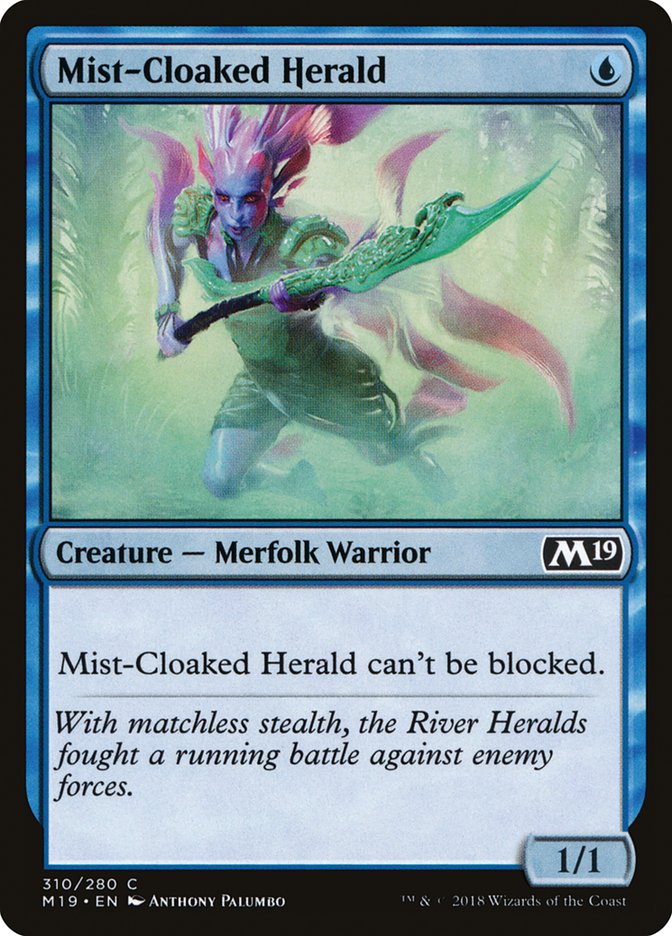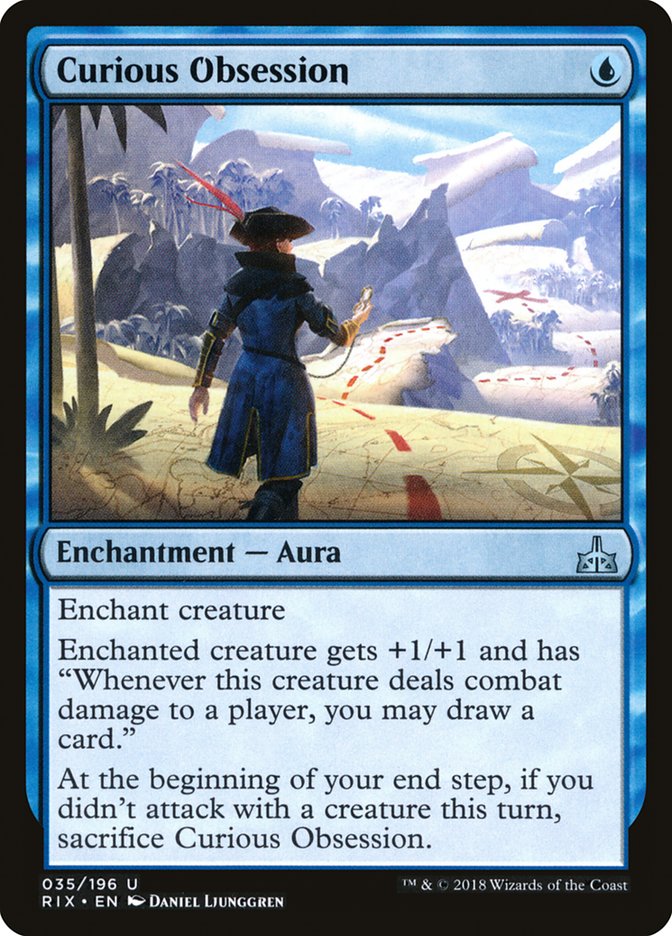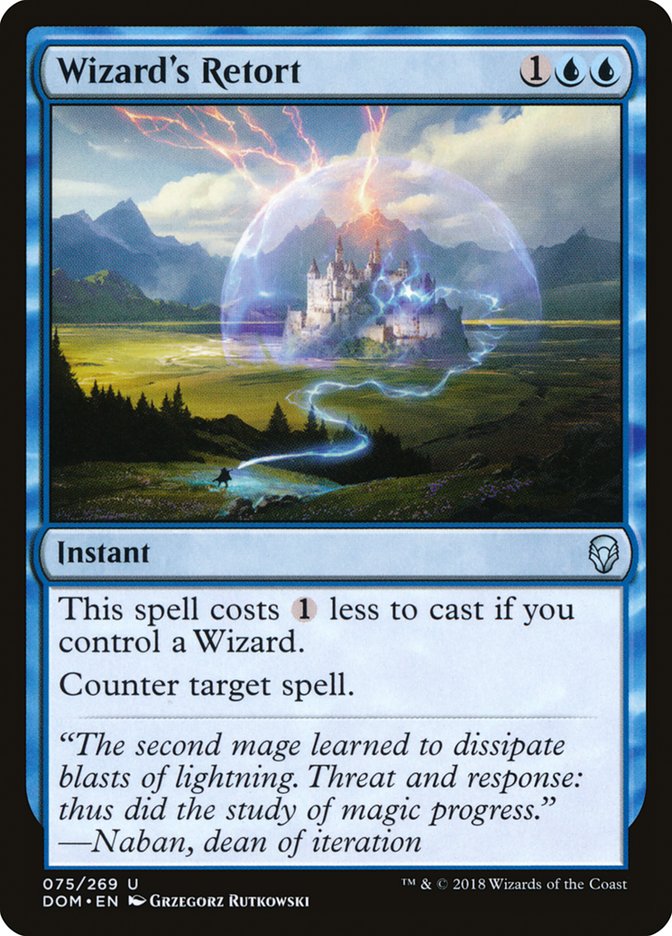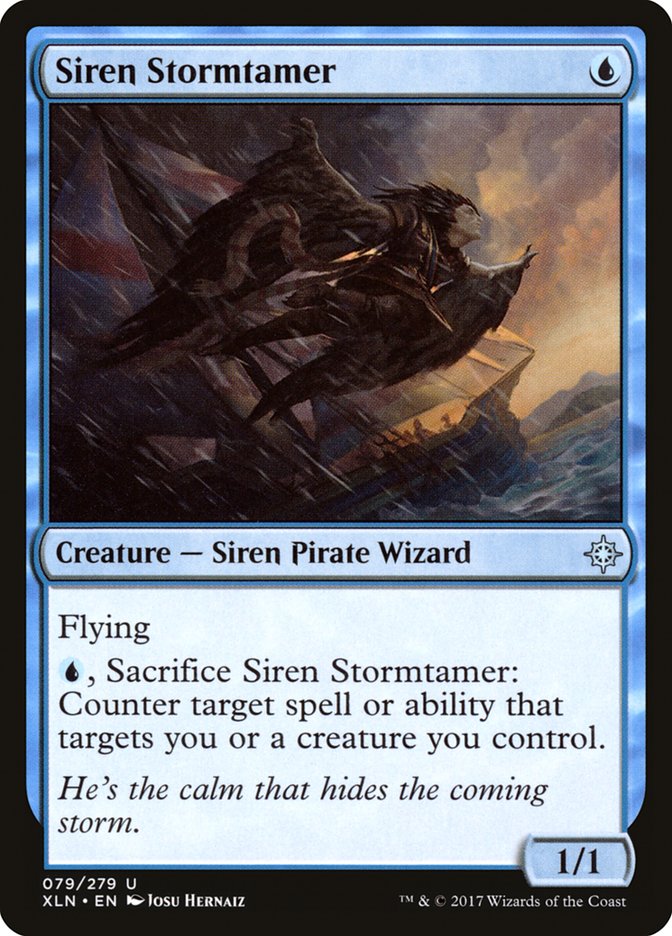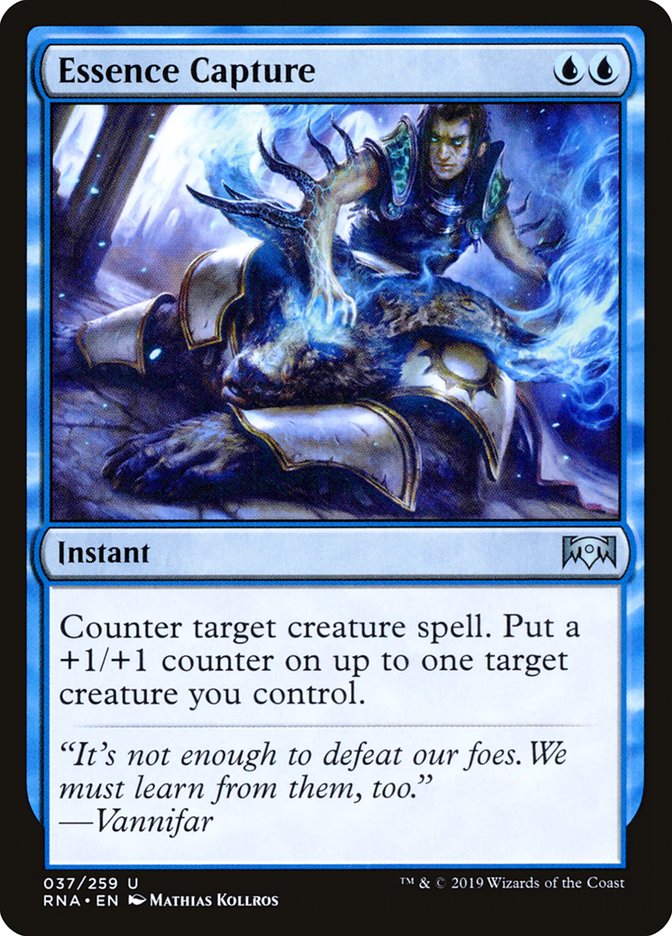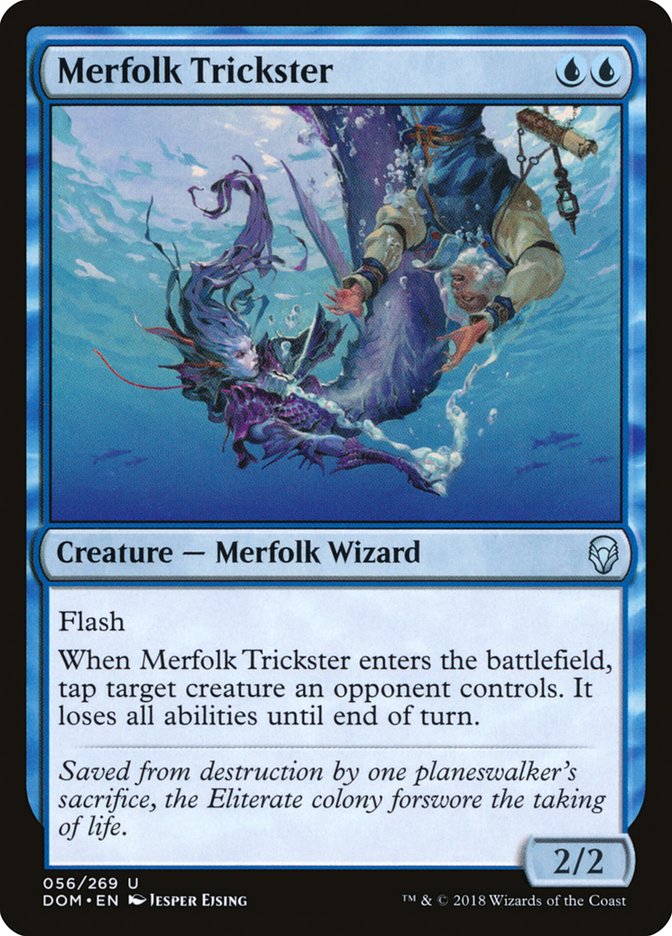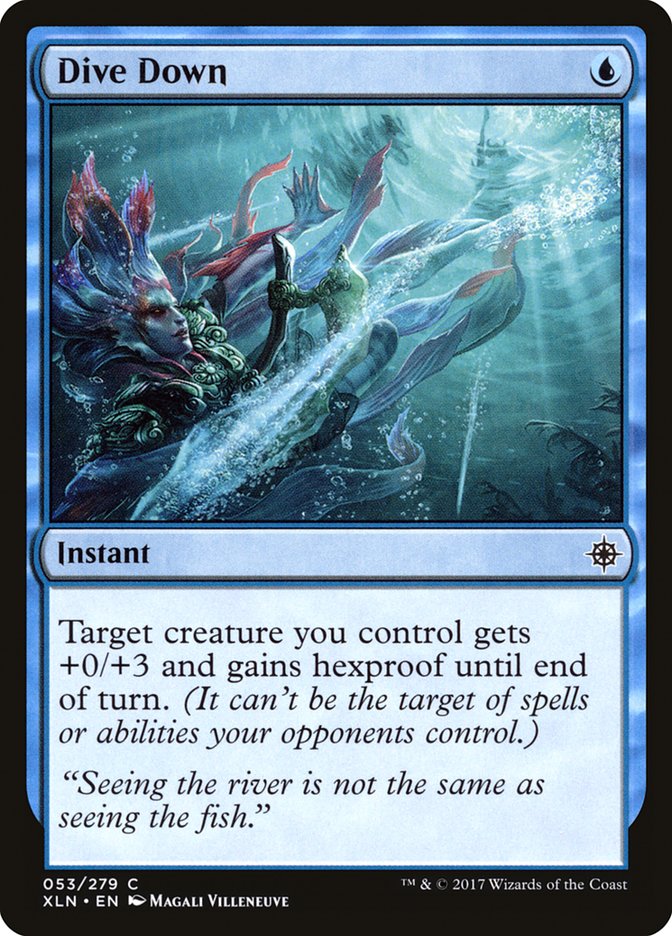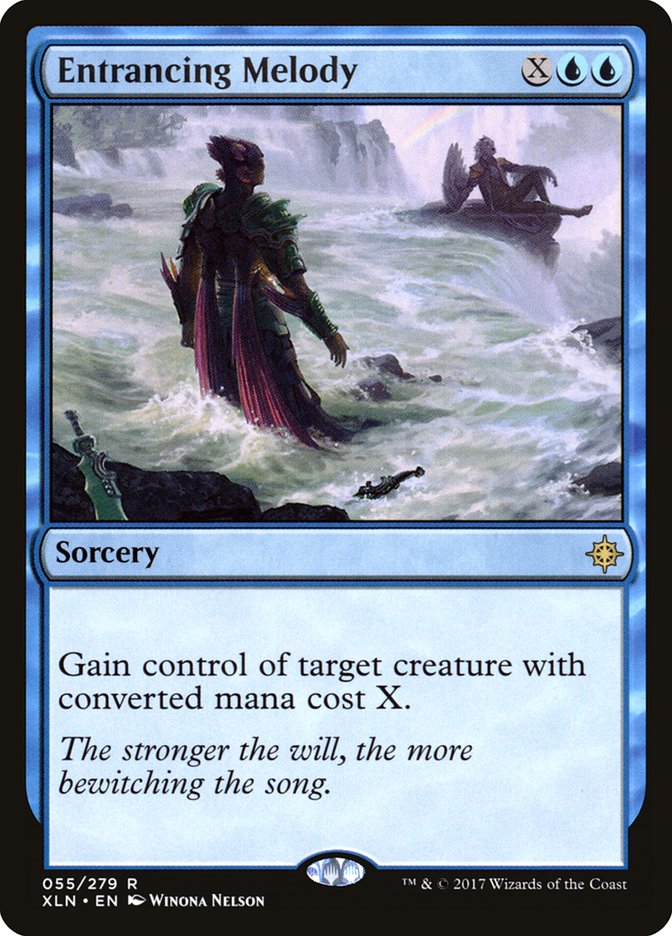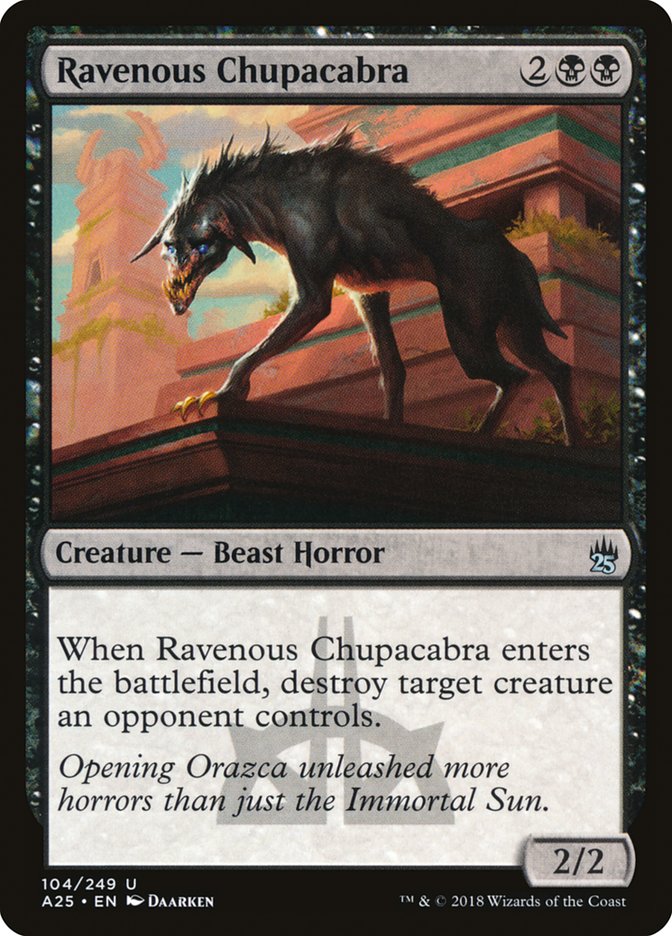The best mirror matches are among my favourite matchups to play in all of Magic.
At their best, mirror matches take all the best and most challenging aspects of playing a deck and amplify them by turning them in on themselves. Card assessment becomes harder when you know the opponent has the same tools as you, and the question of who is the beatdown is much less predetermined than when you get paired against a fundamentally more aggressive or controlling deck. The Temur Energy mirrors were always deeply fascinating to me due to the manner in which every threat in the deck was capable of varying in power level so wildly from one game to the next, for example, and really highlighted the strengths and weaknesses of each of the threats in a more general sense. A huge amount of what you could want to learn about Temur Energy, about how the cards themselves will line up against different decks and the things you have to be used to weaving past, you could learn just by playing mirrors.
Whilst the Mono-Blue Aggro mirror definitely has key moments and play patterns that are unique to the matchup, if you’re looking to learn about risk assessment with the deck, about tempo and how to both maintain it but also how to play from behind, about managing your resources based on what your opponent could have access to, then the mirror is where to learn these things. Further, a lot of Mono-Blue’s strength comes from tripping its opponents up, passing with open mana and challenging the opponent to decide on a play, and playing the mirror is an effective way to understand what it is like to be on the other side so that when you pass the turn to your Sultai Midrange opponent you’ll have that much of a better idea of what is going through their head as they stare across at your two untapped Islands. So let’s dive down into exactly what makes this mirror match tick.
Resisting Obsession
Much like how in normal matchups there are games where you have Curious Obsession and ones where you don’t, that is also the case in the mirror match, only in this case it’s a threat that could hit the battlefield on either side. Weaving these early turns makes for a lot of tension, whether you’re presenting the Obsession or attempting to resist one, and lays the foundation for the rest of the game ahead.
So you have a Curious Obsession in your opening hand. If you’re on the play and have a one-drop, then this is all relatively straightforward: disrespect Spell Pierce, slap your enchantment on your creature, and go to town. Each level of abstraction from this situation makes things slightly more challenging. When you don’t have the one-drop, then aiming to suit up a Merfolk Trickster is a perfectly fine plan too, but is a bit more vulnerable if you’re not careful because your opponent can easily have two mana up on your Obsession turn. The situation is much the same if you’re on the draw with a one-drop: you can easily find yourself looking across at two open mana whilst you stare at the Obsession in your hand.
Merfolk Trickster is the worst-case scenario here, threatening to come down and stop your creature attacking if you cast the Curious Obsession, thus making you sacrifice the enchantment in the process. As a rough heuristic, never cast a Curious Obsession in the early-game if your opponent casting Merfolk Trickster in that moment would be this disastrous (that is, if you don’t have Dive Down in hand or Essence Capture mana open). Merfolk Trickster is good enough without letting it blow up permanents every time it hits the battlefield.
The flip-side of this is I’m very happy to cast my Obsession and get in an attack this turn if my opponent is tapped low, even if I don’t have an answer to next turn’s potential Merfolk Trickster yet. As long as the floor on you casting Obsession is it replacing itself and then disappearing, then that’s really not that bad, considering that if they don’t have the Trickster next turn, or if the Obsession’s trigger draws you the Dive Down, Essence Capture or Wizard’s Retort you need to fight the Trickster, you’re just going to take over the game.
Whilst I advocate a bit of caution when setting up the Obsession, I think that caution goes up even more once the Obsession is active. Once you’re ahead of your opponent, you can afford to take fewer risks and just try to cut off their outs. If the Obsession keeps hitting your opponent you will win, and every hit you get in puts you in a better position for once the Obsession has been dealt with.
What this means in practice is prioritizing holding open mana to counter Tempest Djinn instead of developing your own threats, trying to preserve at least one answer to an opposing Merfolk Trickster trigger, and being willing to just trade your cards and mana for your opponent’s so that they can struggle to catch up.
This last point is really easy to overlook, and is highlighted best in Game 4 of my quarterfinals at the Mythic Championship where Julien Berteaux chose not to counter my Siren Stormtamer early on in the game. Casting Wizard’s Retort on a Stormtamer is a pretty bad exchange generally and in any other game shouldn’t have even been a consideration, but because he did not counter it, I got to deploy a card and use my mana whilst he didn’t, which gave me the catch-up I needed; it’s a small bit, but easily snowballs from there. Once Obsession is active, the most important things are just to one-for-one your opponent’s cards out of the way so that you can keep drawing cards, and carefully shut off your opponent’s avenues to stopping this.
What about from the other side? When I’m on the draw, in the mirror especially, I often decline casting a one-drop and instead prioritise keeping Spell Pierce open on Turn 1 to resist the opposing Turn 2 Obsession. You don’t always have the Spell Pierce, though, and sometimes they have the Spell Pierce to fight back.
The moment your opponent’s Obsession hits the battlefield, you have two options. One is to deploy an Obsession of your own, which causes a tense battle of trying to simultaneously protect your Obsession whilst resisting your opponent’s. The most important thing in these battles is just trying to make sure you don’t waste mana, because that is the easiest way to fall behind when both players have all the cards they could possibly want.
The other option, when you don’t have an Obsession of your own to battle back with, is to put everything you can into trying to stop your opponent’s Obsession. This is not a time for finesse or subtlety, but for desperation. If your Obsession draws teach you how to play when you’re ahead, playing cautiously whilst figuring out your opponent’s outs and slowly eliminating them, then your opponent’s Obsession draws will teach you how to play when you’re behind. Cast your Tempest Djinn even though they have two mana up and just hope they don’t have the Essence Capture. Cast your Trickster even though they have six cards in hand and just hope they don’t have any defence against it. Throw your Entrancing Melody on the table and hope that against all odds it somehow resolves. This is the not-so-fine art of playing from behind when under cascading pressure: just hope your opponent has nothing, and some amount of the time (more often than you’d expect), they won’t.
Getting Tricky
When we were each interviewed before our quarterfinals match, Julien Berteaux and I both independently named Merfolk Trickster the most important card in the mirror match. Merfolk Trickster normally has a lot of utility in general, but here it is both an outright Swiss Army knife and often game-warping.
In addition to blowing up Curious Obsessions like I mentioned earlier, Merfolk Trickster also:
- Eats up one-mana 1/1s despite their evasive properties.
- Ambushes attacking, evasive, Obsessive 2/2s.
- Turns Tempest Djinn into a 0/4 (allowing you to gang-block and eat it in combat when it attacks, or allowing your Djinn to eat your opponent’s should they choose to block and attempt a trade).
- Taps blockers out of the way so your Obsession can keep connecting.
- Is huge (a 2/2 in a world of 1/1s is no joke).
- Allows you to develop pressure in your opponent’s end step after holding open mana to Essence Capture an opposing Tempest Djinn.
- Allows you to tap opposing ambush-Tricksters to stop them from eating your creatures in combat.
In addition, Merfolk Trickster also wears both Essence Capture counters and Curious Obsessions really well, as a couple of copies of these effects mean that even an opposing Tempest Djinn can only hope to trade with the thing (if you don’t have Dive Down, of course). Playing Mono-Blue often becomes an exercise in seeing quite how much value you can get out of Trickster in subtle ways, and the mirror pushes this skill to its limit.
When Merfolk Trickster secretly rules over combat like this, it can have the game-warping effect of preventing combat from occurring. On the most basic level, this means you shouldn’t attack your one-drop in to two open mana on Turn 2, as you’ll often end up throwing said one-drop in the graveyard. Even if you have the Dive Down to protect the one-drop from the Merfolk Trickster, this is not a good exchange; you and your opponent have both committed a card, except they come out of it with a 2/2 on the battlefield.
As the game goes longer, things get increasingly more complicated to assess. Do you attack with your 1/1 on Turn 8? There are a bunch of questions to figure out here. Is the 1/1 actually important enough at this point to worry about throwing away? Does the one damage meaningfully swing the race in any way (if you and your opponent are racing)? Has your opponent cast Merfolk Tricksters yet, and do you have reason to believe they have any more in hand? The biggest question, though, is simply one of how far ahead or behind you are. If I’m really far behind and feel like my only way to win the game is to win a race against my opponent, then I am absolutely throwing caution to the wind and attacking, whereas if I’m pretty comfortable in my position and feel ahead, then I see no reason to risk resources like this.
Whilst using a Dive Down or Siren Stormtamer to protect a small creature from dying in the early-game is pretty unexciting, protecting an attacking Djinn (and thus pushing across four to five damage in the process) has the potential to be much more meaningful and make attacking your Djinn in to a Trickster less worrisome. Also, considering how highly I speak of the Trickster trigger, think about whether there is value in just holding onto your Merfolk Trickster in the mid-game rather than casting it. If you can’t push much damage with it due to the battlefield being clogged up, then the trigger is valuable enough to just keep the card in hand. On Turn 2, I think the damage and battlefield development are always relevant enough to just run the Merfolk out if I have the mana to do so, but the longer the game goes, the more you’ll want to question this approach.
One final note: as powerful as the Merfolk is, it is also exploitable. There are times when all you want to do is resolve your Tempest Djinn, and suddenly attacking your Siren Stormtamer or Mist-Cloaked Herald into two open mana becomes very appealing. If your opponent decides to eat your small creature with their Trickster, they’re tapped out and you have an opening to resolve your Djinn. Of course, the games get really interesting once you and your opponent are both playing on the level that not only do you attack with your one-drop into their Trickster in the hopes of resolving a Djinn, but also your opponent doesn’t cast the Trickster because of fear of said Djinn…
Tempest Djinn itself deserves a few words. It is terrifying, but also clumsy. Games that don’t come down to Obsession draws will eventually lead towards one person fighting to have more Djinns on the battlefield, but the flip-side of this is people will often hold up two mana a lot of the time once their opponent is capable of casting Djinns. If the only way you’re going to keep up with your opponent is by casting a Djinn into their open mana, then do it, but the happier you are with your position, the more I’d be tempted to hold back. Especially if they miss any land drops, you can often get them to tap low at some point and then your Djinn will resolve. The worst-case scenario of them countering your Djinn and then untapping and resolving their own should always be at the back of your mind, though how much you heed these fears depends on how much you feel you can afford to.
After Sideboarding
To expand on the sideboarding I talk about in my previous article, I like cutting any copies of Negate and trimming on Wizard’s Retort largely because these are the most awkward, least impactful counterspells in the matchup (Negate is close to being a bad Spell Pierce in a lot of key spots, whilst Wizard’s Retort plays particularly poorly against opposing Spell Pierces if you ever find yourself without a Wizard on the battlefield).
Chart a Course is slow and clunky and forces you to tap low instead of holding open countermagic for Tempest Djinn and even plays poorly against Merfolk Trickster, and I think it is fine to trim Opts a tiny bit; adapting Pteramanders is important in the late-game so I still like the card, but you don’t always have time in the early-game to cycle your Opts and I don’t like them to rot in my hand too long. I want every Essence Capture I can have in my deck out of fear of Tempest Djinn, and want my land count to be as high as possible to battle through Spell Pierces and build towards big Entrancing Melodies. You really do lose a lot more games to missing land drops in the mirror than you do by flooding.
And then there’s Entrancing Melody. This card is the biggest change between pre- and post-sideboard games, and honestly makes the games play out very differently. Think of Entrancing Melody as the best Ravenous Chupacabra you’ve ever seen (Ravenous Blue-pacabra?). Three mana to remove your opponent’s Pteramander and gain one of your own (not to mention putting a sorcery in the graveyard to help with the adapt cost) is busted, as is five mana to take your opponent’s Tempest Djinn.
The big difference this introduces to the post-sideboard games is suddenly there are removal spells in both decks (much-needed, considering Curious Obsession’s tendency to run away with games in the face of no removal), and highly punishing removal spells at that. The punishment for getting your creature killed isn’t just being down a creature, but instead a huge (often game-losing) swing in battlefield position. It’s like a new sub-game, making sure your opponent’s Entrancing Melody never does anything impactful whilst trying to tap them low enough that you can actually resolve yours.
When playing against Entrancing Melody, you want to use up your Spell Pierces, Dive Downs, and Siren Stormtamers less aggressively. Ideally you never want to be without access to at least one copy of this effect and want to try to always have it open to fight with. A strange side-effect of this is I pay less respect to playing around those cheap protection effects out of my opponent in post-sideboard games, since if they use up their Spell Pierce or Dive Down now, then they won’t have one left to fight over this Entrancing Melody in my hand in a couple of turns’ time. The more Melodies you have in hand, the more you want to trade off bodies with their Stormtamers, though once I have two Melodies, I’m pretty open to the prospect of just using the first as a three-mana Doom Blade on a Stormtamer if needed, as even just resolving one Entrancing Melody successfully will often be enough to run away with the game.
Looking over this, you can see how this mirror match acts as an amazing tool for understanding how to play Mono-Blue in general. For example, we see how being ahead or behind changes how risk-averse you play, how to manage resources and how this changes as the contents of your opponent’s deck changes between games, and even just how to maximise the value of your cards across the course of a game as their values and roles shift in response to the stage of the game you find yourself in. Honestly, I could have easily written twice as much about the Mono-Blue mirror as what I’ve detailed here; the matchup is deep, fascinating and highly skill-testing, and mastering it stands to be one of the biggest steps you can take towards becoming proficient with playing this wonderful deck.


